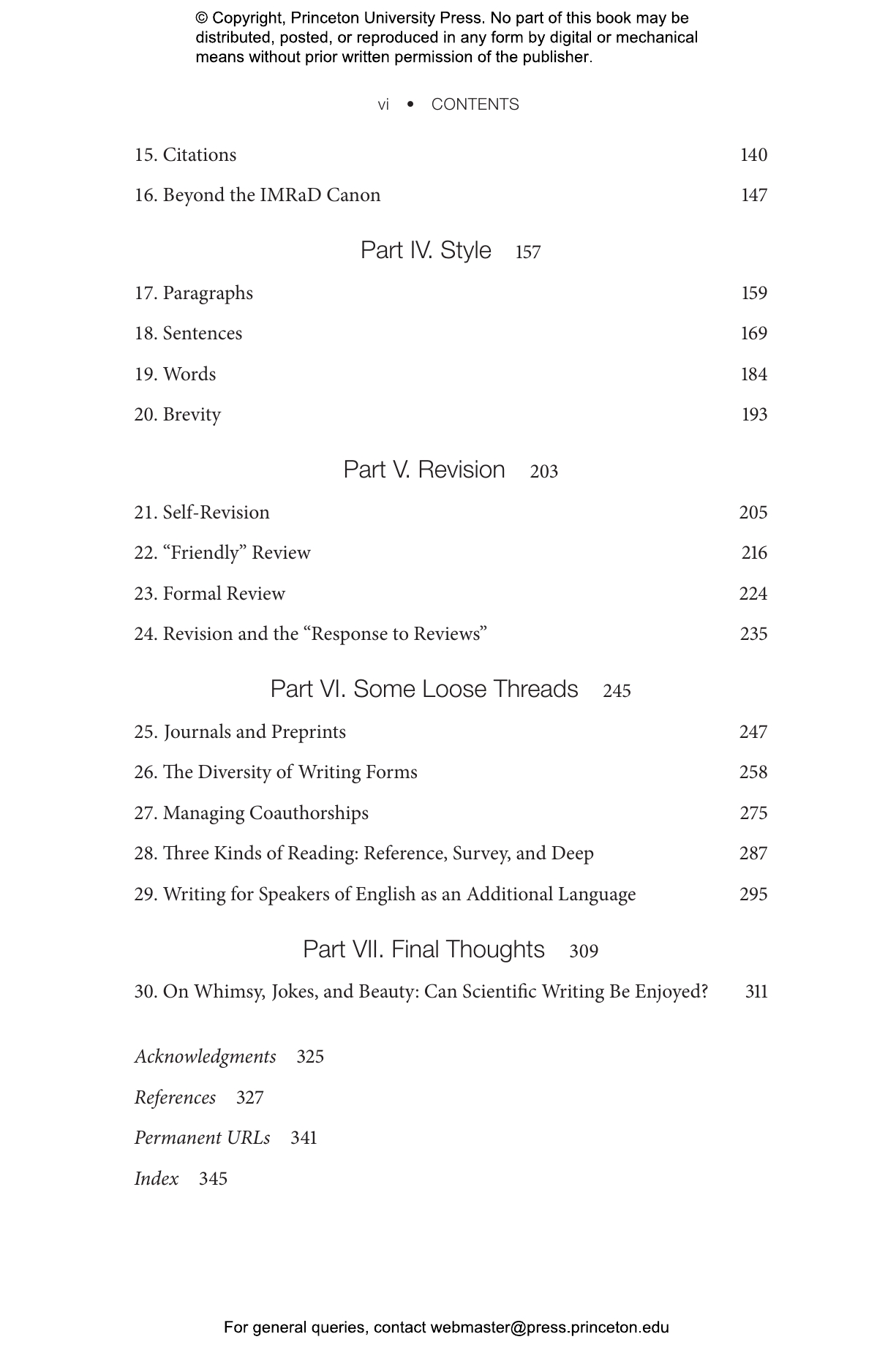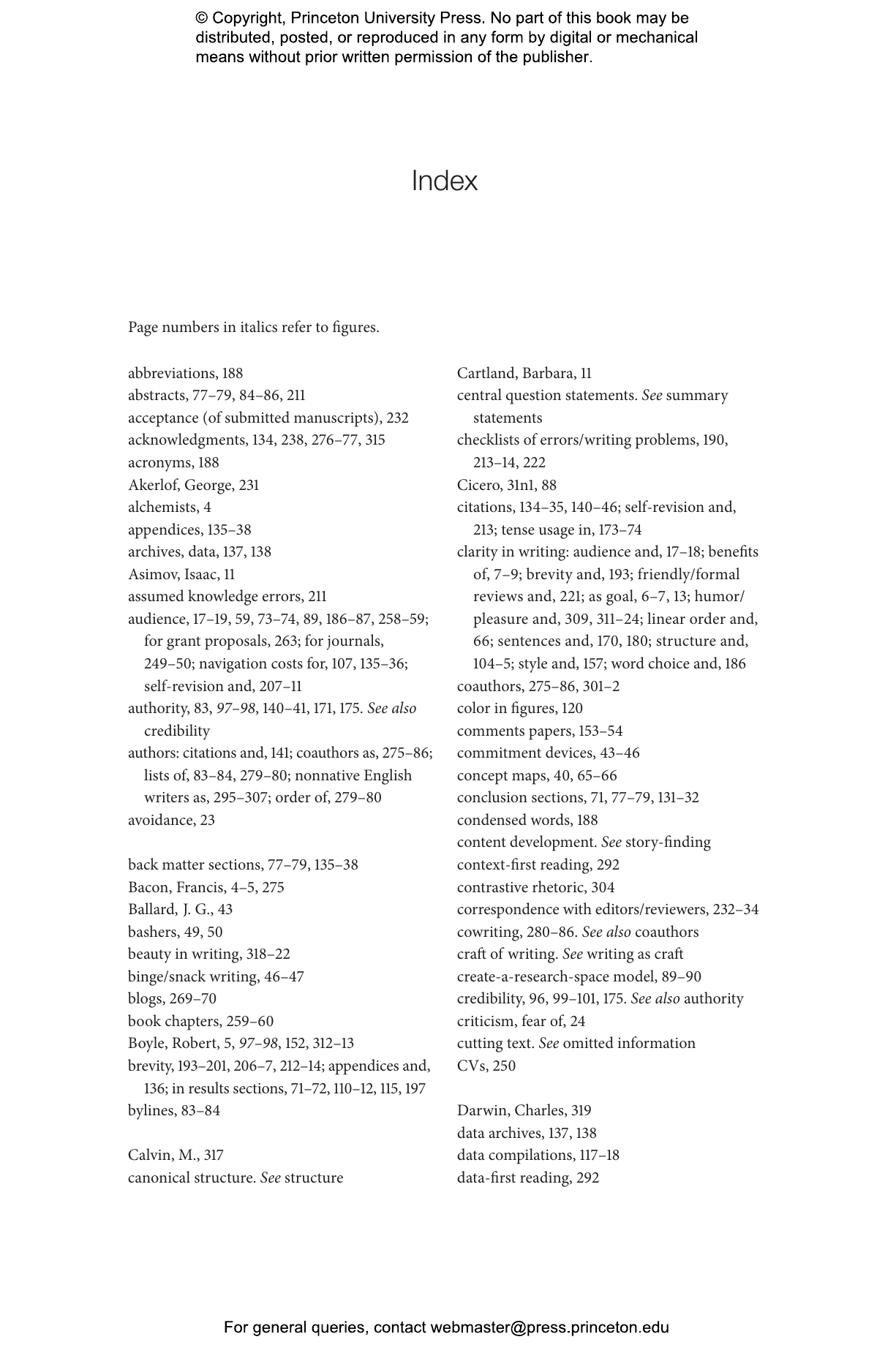The Scientist’s Guide to Writing explains the essential techniques that students, postdocs, and early-career scientists need to write more clearly, efficiently, and easily. Now fully updated and expanded, this incisive primer offers practical advice on such topics as generating and maintaining writing momentum, structuring a scientific paper, revising a first draft, handling citations, responding to peer reviews, managing coauthorships, and more. The ability to write clearly is critical to any scientific career. The Scientist’s Guide to Writing shows scientists how to become better writers so that their ideas have the greatest possible impact.
- New chapters discuss effective reading, choosing the right journal for your research, and the advantages and disadvantages of posting preprints
- Provides additional advice on reporting statistical results, dealing with conflicting peer reviews, managing coauthorships, writing with English as an additional language, and more
- Emphasizes writing as a process, not just a product
- Encourages habits that improve motivation and productivity
- Offers detailed guidance on submission, review, revision, and publication
- Includes a wealth of new exercises
Stephen B. Heard is professor of biology at the University of New Brunswick in Canada. He is the author of Charles Darwin’s Barnacle and David Bowie’s Spider: How Scientific Names Celebrate Adventurers, Heroes, and Even a Few Scoundrels. Twitter @StephenBHeard
- What’s New in the Second Edition?
- Preface
- A Note on the Exercises
- Part I. What Writing Is
- 1. On Bacon, Hobbes, and Newton, and the Selfishness of Writing Well
- 2. Genius, Craft, and What This Book Is av������
- Part II. Writing Behavior
- 3. Writing and Reading
- 4. Managing Your Writing Behavior
- 5. Getting Started
- 6. Momentum
- Part III. Content and Structure
- 7. Finding and Telling Your Story
- 8. The Canonical Structure of the Scientific Paper
- 9. Front Matter and Abstract
- 10. The Introduction Section
- 11. The Methods Section
- 12. The Results Section
- 13. The Discussion Section
- 14. Back Matter
- 15. Citations
- 16. Beyond the IMRaD Canon
- Part IV. Style
- 17. Paragraphs
- 18. Sentences
- 19. Words
- 20. Brevity
- Part V. Revision
- 21. Self-Revision
- 22. “Friendly” Review
- 23. Formal Review
- 24. Revision and the “Response to Reviews”
- Part VI. Some Loose Threads
- 25. Journals and Preprints
- 26. The Diversity of Writing Forms
- 27. Managing Coauthorships
- 28. Three Kinds of Reading: Reference, Survey, and Deep
- 29. Writing for Speakers of English as an Additional Language
- Part VII. Final Thoughts
- 30. On Whimsy, Jokes, and Beauty: Can Scientific Writing Be Enjoyed?
- Acknowledgments
- References
- Permanent URLs
- Index
“A tremendous resource for new science writers. Heard writes so that you want to keep reading, which of course is the skill he’s teaching in this book. The Scientist’s Guide to Writing is carefully considered, engaging, and full of useful ideas.”—Mikaela Huntzinger, coauthor of How to Do Ecology: A Concise Handbook
“A delight to read and highly informative.”—Stephen K. Donovan, Journal of Scholarly Publishing
“This book does a great job of providing readers with the tools needed to make writing easier and more effective by focusing on the process and developing the habit of writing. As a consequence, this is a great guide for graduate students, and will also be helpful to scientists who are looking for ways to improve their writing and to get more of it done.”—Dianna K. Padilla, Quarterly Review of Biology

















